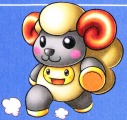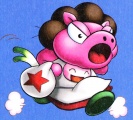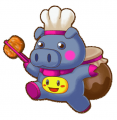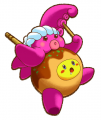Kigurumi (ability): Difference between revisions
Torchickens (talk | contribs) Interesting. I thought it was probably a play on something |
Torchickens (talk | contribs) m →Trivia |
||
| Line 24: | Line 24: | ||
*In ''Densetsu no Starfy 2'', different music is played for Yanki Kigurumi. | *In ''Densetsu no Starfy 2'', different music is played for Yanki Kigurumi. | ||
**In fact, listening to its theme on the sound test in [[Moe's House]] causes [[Moe]] in the background to cry out and refuse to sing it when [[Uotsaruto]] plays the track, which then causes Starfy to panic and run back and forth. | **In fact, listening to its theme on the sound test in [[Moe's House]] causes [[Moe]] in the background to cry out and refuse to sing it when [[Uotsaruto]] plays the track, which then causes Starfy to panic and run back and forth. | ||
*Yanki Kigurumi is probably a reference to the [[wikipedia:Yank%C4%AB#In_other_parts_of_the_world|Yankī]] "subculture" in Japan. It was represented as a stereotype for Japanese youth who would adopt "[[wikipedia:American|American]]" hairstyles and fashions | *Yanki Kigurumi is probably a reference to the [[wikipedia:Yank%C4%AB#In_other_parts_of_the_world|Yankī]] "subculture" in Japan. It was represented as a stereotype for Japanese youth who would adopt "[[wikipedia:American|American]]" hairstyles and fashions. <ref>[http://dictionary.goo.ne.jp/leaf/jn2/223508/m0u/%E3%83%A4%E3%83%B3%E3%82%AD%E3%83%BC/ ヤンキー Definition at ne.goo.jp]</ref> From the late 1970s, it was constructed by the media as a derogatory term for delinquent youth who would often shave their eyebrows, cause violence or trouble, and wear altered school uniforms. | ||
==References== | ==References== | ||
<references/> | <references/> | ||
Revision as of 15:59, 18 March 2012
Kigurumi is an ability in the first four Starfy games. It is somewhat similar to Roostar. When using it, Starfy or Starly wear an animal costume. The Legendary Starfy is the only game which lacks this ability if Roostar doesn't count.
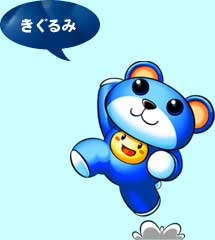
Variety and controls
In Densetsu no Starfy, the Kigurumi is a blue teddy bear. Use the control pad to move left or right. Press the B button to scare enemies. Press the A button to jump. In Densetsu no Starfy 2, it's a green koala. It has the same controls as Densetsu no Starfy's version until Starfy gets the upgrade. The upgrade is a red crocodile dressed in black.
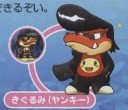
The player can press Select to switch between the koala and the crocodile. In Densetsu no Starfy 3, it's a grayish sheep. This one can speed up by holding the B button. The upgrade is a pink pig. In Densetsu no Starfy 4, it's a black pig and an octopus. The player can change forms by pressing the L or R buttons. This time they can shoot food at enemies by pressing the Y button. Holding the B button allows the player to go faster.
Gallery
-
Densetsu no Starfy 2 artwork(Starfy wearing the Kigurumi)
-
Densetsu no Starfy 2 artwork(Starfy wearing the Yanki Kigurumi)
-
Densetsu no Starfy 3 artwork(Starfy wearing the Sheep Kigurumi)
-
Densetsu no Starfy 3 artwork(Starly wearing the Pig Kigurumi)
-
Densetsu no Starfy 4 artwork(Pig Kigurumi)
-
Densetsu no Starfy 4 artwork(Octopus Kigurumi)
Trivia
- Fukafuka gives Starfy and Starly the ability in the GBA games.
- Zozobi gives Starfy and Starly the ability in Densetsu no Starfy 4.
- Densetsu no Starfy is the only game without two different versions of the Kigurumi costume.
- In Densetsu no Starfy 2, there is a boss with the same name.
- In Densetsu no Starfy 2, different music is played for Yanki Kigurumi.
- In fact, listening to its theme on the sound test in Moe's House causes Moe in the background to cry out and refuse to sing it when Uotsaruto plays the track, which then causes Starfy to panic and run back and forth.
- Yanki Kigurumi is probably a reference to the Yankī "subculture" in Japan. It was represented as a stereotype for Japanese youth who would adopt "American" hairstyles and fashions. [1] From the late 1970s, it was constructed by the media as a derogatory term for delinquent youth who would often shave their eyebrows, cause violence or trouble, and wear altered school uniforms.
References



